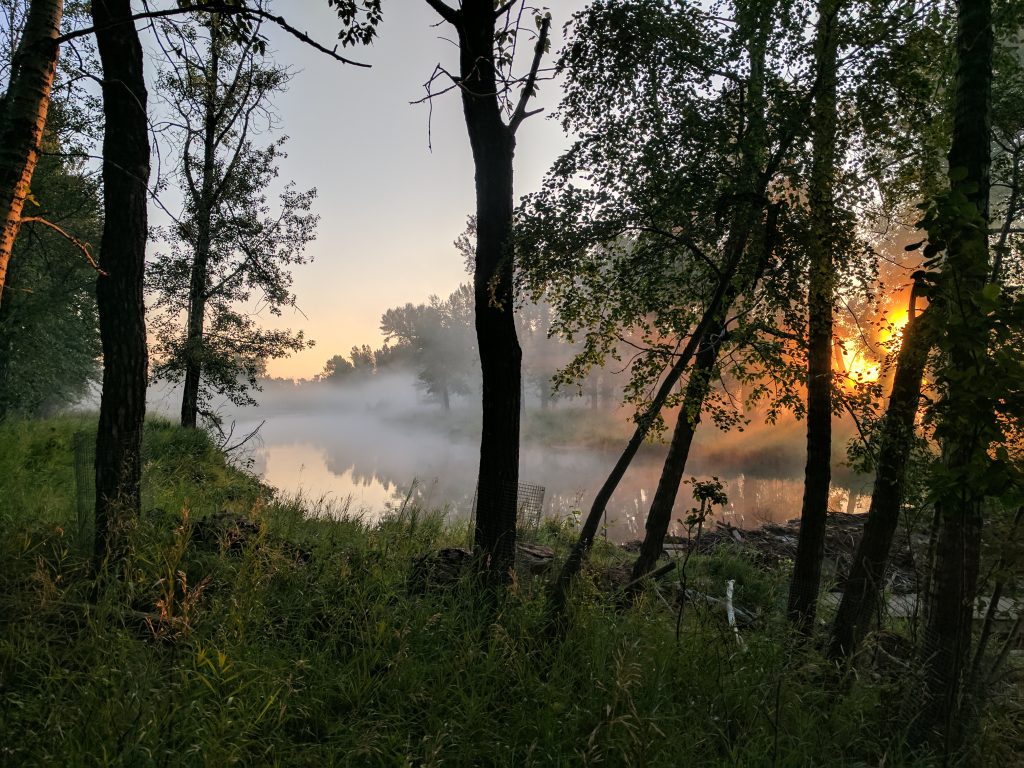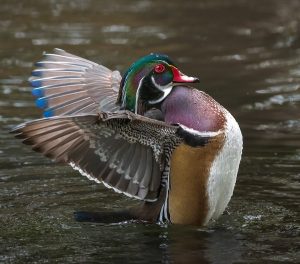My BIG Alberta Backyard – Inglewood Bird Sanctuary

Inglewood Bird Sanctuary by Nick Bartok
BY KATRINE KONOPNICKI
Alberta is a great place to live. It’s a big, beautiful province full of all kinds of natural wonders. This is where we introduce you to the diversity of wildlife, and unique and interesting wild spaces, that are part of your Big Alberta Backyard. This time, let’s explore the Inglewood Bird Sanctuary in Calgary.
What is the Inglewood Bird Sanctuary?
The Inglewood Bird Sanctuary (IBS) is part of a network of 92 Federal Migratory Bird Sanctuaries across Canada. It’s unique because it’s one of the only bird sanctuaries inside a city. It’s also one of the smallest at 36 hectares. Being a Migratory Bird Sanctuary gives this area special protection with strict rules to keep the area as natural as possible. You can’t bike, walk your dog, or feed the animals. There are also areas where people are not allowed to go, so make sure to stay on the pathways.
These special protections make this a great natural area that is attractive to migrating birds. Since 1969, there have been 278 species found at the sanctuary.
What happens at the Inglewood Bird Sanctuary?
Since 1995, the Calgary Bird Banding Society (CBBS) has studied the populations of migrating boreal songbirds in the IBS. It’s hard to study these birds in the Boreal Forest because it is so big. It’s easier to catch them when they migrate in the spring and fall. There is a reserve at the east end of the IBS where they set up special “mist” nets that catch and hold birds safely in pockets until a bander comes to get them. Banders then measure, weigh, and age each bird. They also carefully place a metal band on their leg so that if it is recaptured scientists can compare the information on the bird. Birds from the IBS have been recaptured across the prairies. Kids who are 14 and older can join the CBBS and take part in bird banding activities at IBS (calgarybirdbandingsociety.org).
What birds live in the Inglewood Bird Sanctuary in the winter?

Wood Ducks by David Campbell
On the lagoon, look for the wood ducks who love to spend time on the fallen logs. Great horned owls roost in the poplar trees. Look up high and close to the trunk; their feathers are brown and mottled to camouflage them against the tree bark. On the river, you can find big flocks of Canada geese and mallards. You can also find diving ducks like common goldeneye and buffleheads. Watch for them to dive and then pop back up a few metres away. In the spruce trees, look for tiny birds like chickadees, nuthatches, woodpeckers, and even brown creepers. You can also look for signs of birds, like nests in branches and holes in tree trunks.
What else lives in the Inglewood Bird Sanctuary?
There are lots of mule deer in the park; they have ENORMOUS ears and a black-tipped tail. Near the Colonel Walker House, look up into the spruce trees — you might just spot a sleeping porcupine! Occasionally, you can glimpse a coyote wandering through. More often, you will find signs of coyotes, like their scat (poo) and tracks on the pathways.
Observe, Investigate, Explore, and Be Amazed!
You can visit the Nature Centre to investigate interpretive exhibits and then head out to explore the 2.3-km self-guided loop trail. You might be one of the lucky ones to spot a rare bird! In 2021, visitors spotted a yellow-crowned night heron. This was only the second time one has ever been seen in the WHOLE province. There were rare sightings of a yellow vireo by the bird banders as well. And keep an eye out for the river otters who have been observed using the lagoon!
Katrine Konopnicki is a Nature Alberta Board Member and the Director of Communications for Nature Calgary. Thanks to Doug Collister from the Calgary Bird Banding Society for information about bird banding at Inglewood Bird Sanctuary.
This article originally ran in Nature Alberta Magazine - Winter 2022.
